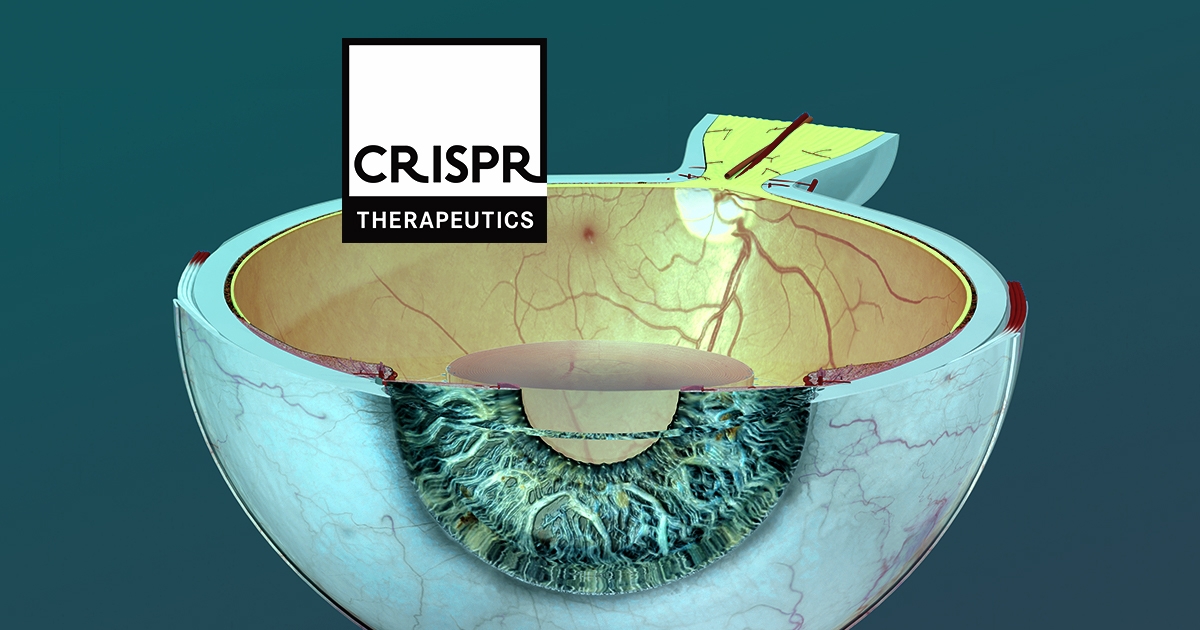CRISPR and inherited retinal disease

Once again the eye proved to be the pioneer target in a new gene therapy approach, with the use in February of an agent utilizing in vivo CRISPR to treat an inherited retinal disease (IRD). Editas’ EDIT-101 (also known as AGN-151587), began Phase I/II clinical trials for treating Leber’s congenital amaurosis 10 (LCA10), the most common cause of inherited childhood blindness. Wall Street seems to like the concept as well, with Editas’ shares gaining 16.3% in 2019 against an industry decrease of 1.9% in the bio/genetics market. Allergan is on board as well, which inked a deal in 2017 with Editas worth $90 million to develop five of the gene therapy company’s genome candidates.
Safety and efficacy results from the first patient treated in the BRILLIANCE clinical trial of EDIT-101 may be available as early as later this month or in early April, and there are plans to treat an additional 18 children (aged 3 through 17 years) and adults over the next few months in dose-ranging arms (as well as with only one eye to start, adding the second if EDIT-101 meets endpoints).
Mark Pennesi, MD, PhD, of Casey Eye Institute, Oregon Health & Science University in Portland, where the first patient with LCA10 was treated, noted that the CRISPR mechanism replaces the deficient gene with a normal version. The mutated gene, he said, is like a stop sign preventing the production of a certain protein. With EDIT-101, he said, “you’re cutting out the stop sign.”
“We literally have the potential to take people who are essentially blind and make them see,” said Charles Albright, PhD, executive vice president and chief scientific officer at Editas Medicine in The Washington Post. “We think it could open up a whole new set of medicines to go in and change your DNA.”
What are CRISPR and LCA?
CRISPR — Clustered, Regularly Interspaced, Short Palindromic Repeats — refers to a recently developed gene editing technology that can revise, remove, and replace DNA in a highly targeted manner, according to Editas. CRISPR uses a combination of 2 types of molecules to edit disease-related genes or to modify cells: a nuclease (the gene editor) and guide RNA (which helps the nuclease find the right place to edit).
LCA is a group of inherited retinal degenerative disorders caused by mutations in at least 18 different genes. The incidence occurs in about two to three per 100,000 live births worldwide. Symptoms of LCA appear within the first years of life, resulting in significant vision loss and potentially blindness. The most common form of the disease, LCA10, is a monogenic disorder caused by mutations in the CEP290 gene and is the cause of disease in approximately 20% 30% of all LCA patients.
EDIT-101 and Other Gene Therapy Approaches
EDIT-101 is injected subretinally, relying on in vivo CRISPR-Cas9 editing of an LCA10-causing mutation in the CEP290 gene, but would not be the first gene therapy for an IRD. Luxturna (voretigene neparvovec-rzyl, Spark Therapeutics) received U.S. Food and Drug Administration approval in late 2017, and is indicated for inherited vision loss due to mutations in the RPE65 gene. (Spark Therapeutics was acquired by Roche (OTCQX: RHHBY) in December.)
Luxturna uses an adeno-associated virus (AAV) vector administered by a single subretinal injection in both eyes, done no fewer than 6 days apart, to treat patients aged 1 year or older who have confirmed biallelic (from both parents) RPE65 mutation-associated retinal dystrophy. EDIT-101 employs CRISPR-Cas9 editing to replace the mutated CEP290 gene with its normal counterpart. Both agents are considered “one-and-done” treatments.
Market Performance of Primary Players
But will the promise of gene therapy pay off? Here’s how the biotech and ophthalmic indices performed through last week:
• The OIS Index, last calculated on March 1, stands at 1,046.67. The index, launched in October 2016, consists of publicly owned companies that derive at least half of their value from ophthalmic products and technology. The index at launch was assigned a base value of 1,000, and is weighted about 50% biopharma and 50% ophthalmic devices, based on company valuations. The OIS Index was down over 1 month (-9.6%), 3 months (-3.3%), and 1 year (-0.2%).
• The XBI-SPDR Biotech ETF (exchange-traded fund) of biotech companies reached its 1-year high of $98.79 on Christmas Eve. The XBI’s low was reached March 13, at $66.51, a 33% drop from the high.
• Three other biopharma and biotech indices, tracked on the OIS Index home page, all posted gains over 1 year (as of March 1): NASDAQ Biotechnology Index, up 1.2%; the U.S. Medical Device Index, up 6.8%; and the U.S. Market Russell 3000 Index, up 4.9%.
Some analysts say that falling stock prices as a result of the COVID-19 pandemic may represent buying opportunities in this space, especially regarding Regeneron (NASDAQ: REGN). Regeneron has enjoyed phenomenal success with Eylea (aflibercept, Regeneron Pharmaceuticals/Bayer) for the treatment of wet age-related macular degeneration and retinopathy ($7.5 billion in sales in 2019), despite questions regarding Eylea-related patents.
Globally, the gene therapy market (for all indications and mechanisms of action) is expected to grow from $3.8 billion in 2019 to $13 billion by 2024 at a compound annual growth rate of 27.8%, primarily driven by the high incidence of cancer and other target diseases, the availability of reimbursements, and the increasing funding for gene therapy research.
In addition to the treatment of LCA10, Editas Medicine is studying gene therapy for ocular conditions such as Usher syndrome 2A and retinitis pigmentosa; blood diseases such as sickle cell and beta-thalassemia; and cancer-related treatments such as solid tumors and blood cancers.
